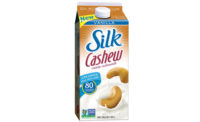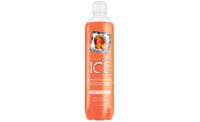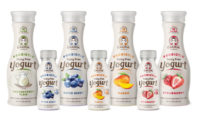Recently, plant-based dairy alternatives such as almond milk and coconut milk are taking their success mainstream. Although soy milk has been an option available at major coffeehouses for years, only recently did almond and coconut milk begin making an appearance.
Refrigerated almond milk dollar sales increased 23.9 percent, and refrigerated coconut milk dollar sales grew by 9.2 percent in the 52 weeks ending May 17, according to data from Information Resources Inc. (IRI), Chicago. Likewise, almond milk was featured in nearly half of dairy-alternative drink launches in the United States during the 12 months ending June 30, 2014, Natalie Tremellen, market analyst at Innova Market Insights, the Netherlands, told Beverage Industry in the November 2014 issue. Globally, almond milk was used in nearly one-fifth of new dairy alternatives, up from 14 percent in 2013, she says. Worldwide dairy-alternative drink launches featuring coconut milk increased 40 percent during the timeframe, she said.
Coconut milk took the fourth-largest part of the dairy alternatives segment, with 3 percent market share, according to IBISWorld’s January “Soy and Almond Milk Production in the U.S.” report. Almond milk, on the other hand, took the top spot, with a 65.5 percent share of the market last year, the report states. To put this into context, almond milk had captured only 3 percent of the market in 2008, the market research firm reports. This puts soy milk in the No. 2 spot with a 30 percent share of the market, it states.
Consumers also have shown a growing interest in protein and fiber in the dairy-based and dairy-alternative drinks segments, Euromonitor’s Senior Research Analyst Virginia Lee told Beverage Industry in its November 2014 issue. In 2014, WhiteWave Foods launched Silk Vanilla Protein + Fiber Almondmilk that offers 5 grams of protein and 5 grams of fiber in a 240-ml serving size.
Other dairy alternatives also are showing potential for growth, according to IBISWorld. Rice milk is popular because it is the least allergenic dairy alternative and is a good source of B vitamins, the firm notes. However, its potential might be limited because it is a relatively poor source of calcium and is high in starch, making it unsuitable for diabetics, it added.
However, quinoa, lupine, peas, peanuts, cashews and sesame seeds carry the possibility of entering the United States at a later date on a commercial scale, IBISWorld reported. These sources currently are used to make plant-based milks in countries overseas.
Nevertheless, dairy drinks are working to position themselves in a more healthful way in order to gain consumer interest. For instance, the Milk Processor Education Program (MilkPEP) has been promoting low-fat chocolate milk as a solution for post-workout recovery.
Finally, kefir has the potential to help boost the dairy-based drinks segment. According to IRI, refrigerated kefir dollar sales grew 7.7 percent in the 52 weeks ending May 17.
Last year, Lifeway Foods Inc., Morton Grove, Ill., introduced three new kefir lineups: Lifeway Veggie Kefir, which blends vegetable juices and kefir; Lifeway Kefir with Oats, which contains 11 grams of complete protein per serving; and Lifeway Perfect 12, which contains 12 probiotic cultures and 12 grams of carbohydrates and is sweetened with stevia.
Despite these efforts, Euromonitor expects the U.S. drinking milk market to decline by 2 percent in constant value terms between 2014 and 2019, Lee said. On the other hand, the market research firm projects dairy alternatives to grow by 52 percent in constant value terms during the timeframe.






